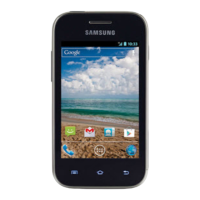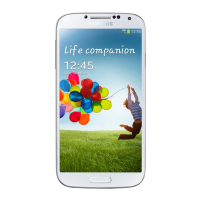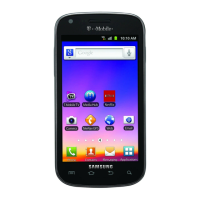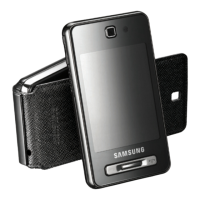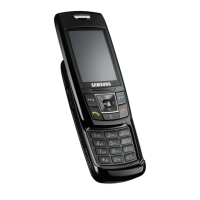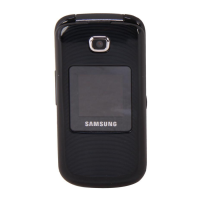Do you have a question about the Samsung SGH-S730G and is the answer not in the manual?
Explains symbols used in the manual for user guidance and warnings.
Lists registered trademarks and intellectual property rights.
Provides crucial warnings to prevent injury to users and damage to the device.
Details essential precautions for safe operation, driving, and handling.
Covers essential guidelines for phone operation, battery life, and SIM card handling.
Explains SAR, FCC limits, and health considerations related to RF energy exposure.
Discusses FDA's role, health hazards, and research on wireless phone safety.
Offers essential advice for using a mobile phone safely while driving.
Outlines regulations and recommendations for using the phone in various environments.
Addresses potential interference with electronic devices like pacemakers and hearing aids.
Covers safety advice for use in vehicles, restricted areas, and potentially explosive atmospheres.
Details how to make emergency calls and important considerations.
Advises against children playing with the phone due to safety and cost risks.
States compliance with Part 15 of FCC rules and potential interference issues.
Warns against unauthorized modifications, accessories, and physical damage.
Covers vehicle installation, aircraft use, and service personnel guidelines.
Discusses signal reception, power save features, and peak performance maintenance.
Explains feature availability, battery standby/talk time, and factors affecting it.
Provides guidelines for safe battery use, charging, temperature effects, and general maintenance.
Offers advice on keeping the phone dry, clean, and protected from physical damage and extreme temperatures.
Instructs on proper disposal of the product and batteries according to environmental regulations.
Lists items included in the product box and variations based on region.
Describes the physical layout of the phone's front and rear keys, and their functions.
Explains the three main display areas and defines common icons appearing on the phone.
Guides on inserting the SIM card, battery, and charging the phone for first use.
Details the procedure for powering the phone on/off and activating the offline profile.
Guides users on how to navigate through the phone's menu system.
Covers adjusting key tone volume, silent profile, creating phone profiles, and selecting ringtones.
Instructions for selecting wallpapers, themes, and assigning functions to shortcut keys.
Explains how to use simplified menus and set up a phone lock for security.
Provides instructions for making, answering, ending calls, using speakerphone, and headsets.
Covers sending and viewing text (SMS), multimedia (MMS) messages, and email.
Details the different text input modes (ABC, T9, Number, Symbol) and their usage.
Instructions for checking emails and adding/searching contacts in the phonebook.
Guides on turning on, pairing, and authorizing Bluetooth devices for data exchange.
Explains Remote SIM mode with car kits and how to activate and connect to Wi-Fi networks.
Details customizing WLAN connection profiles and using WPS for secure connection.
Solutions for SIM card errors, phone lock, PIN/PUK issues, and network connection problems.
Troubleshooting tips for failed calls, unreachable callers, poor audio quality, and microphone problems.
Addresses low battery, poor call audio, charging problems, and phone heating during use.
| Model | SGH-S730G |
|---|---|
| Network Technology | GSM |
| 2G bands | GSM 850 / 900 / 1800 / 1900 |
| GPRS | Class 12 |
| EDGE | Class 12 |
| Status | Discontinued |
| SIM | Mini-SIM |
| Type | TFT, 256K colors |
| Call records | Yes |
| Alert types | Vibration; MP3, WAV ringtones |
| Loudspeaker | Yes |
| 3.5mm jack | Yes |
| WLAN | No |
| Bluetooth | 3.0, A2DP |
| GPS | No |
| Radio | FM radio |
| USB | microUSB 2.0 |
| Messaging | SMS, MMS, Email |
| Browser | WAP 2.0/xHTML |
| Games | Yes |
| Java | Yes, MIDP 2.0 |
| Colors | Black |
| Size | 3.0 inches |
| Memory Card slot | up to 32 GB |
| Phonebook | Yes |
| Internal | 20 MB |
| Video | Yes |
| Battery | Li-Ion |
